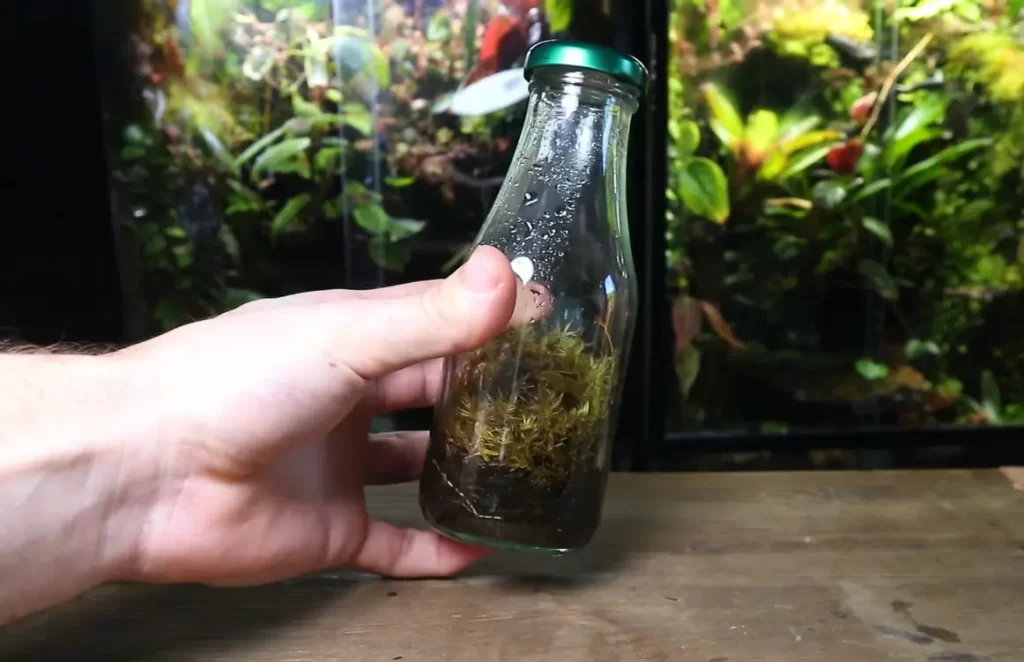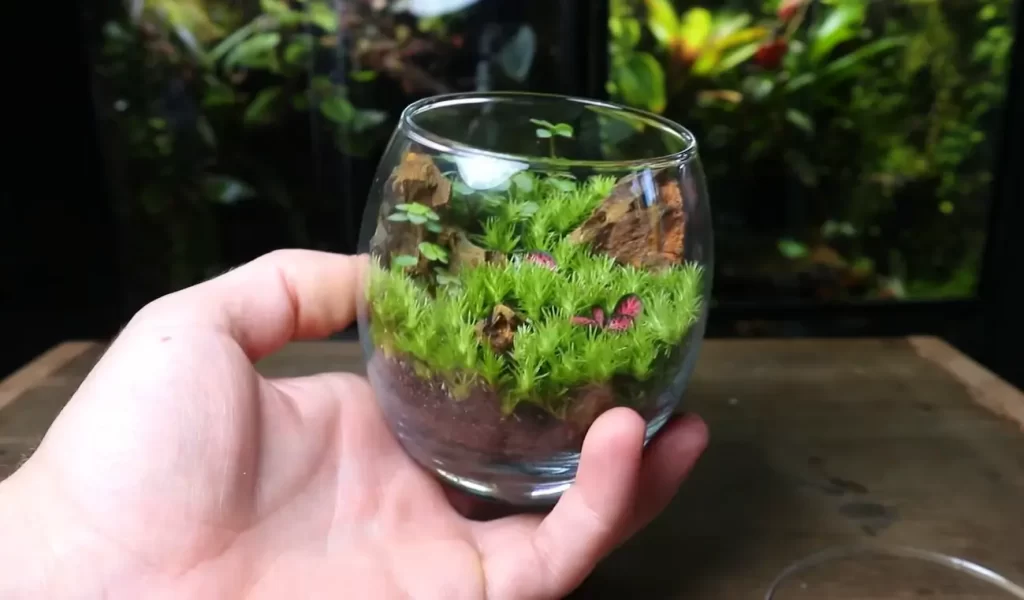How Long Do Terrariums Last? Everything You Need To Know
Terrariums are a beautiful addition to any home or office, adding a touch of nature and greenery to your indoor space. But as with any living thing, you may wonder: how long do terrariums last? Will it thrive for years or decline after just a few months?
Terrariums can last for many years with proper care, but the length will vary depending on the type of terrarium, the plants and animals that live in it, and the environment.
In this blog post, we’ll explore the lifespan of terrariums, what factors can affect their longevity, and the different types of terrariums.
The Different Types of Terrariums
Terrariums are miniature ecosystems that allow you to bring the beauty of nature into your home. They come in various shapes, sizes, and designs, each with unique features and requirements.

Here are some different types of terrariums:
1. Closed Terrarium
A closed terrarium is a sealed container that creates a self-sustaining environment for plants. It uses a cycle of condensation and evaporation to provide the necessary moisture for plant growth. These terrariums require little maintenance, as the closed environment helps regulate the ecosystem. However, you must be careful not to overwater them, which may lead to mold growth.
2. Open Terrarium
An open terrarium is a container with an opening that allows air to circulate freely. These terrariums are better suited for plants that require drier conditions and less humidity. They require more frequent watering than closed terrariums, and the plants must be chosen carefully to ensure they can thrive in an open environment.
3. Air Plant Terrarium
Air plant terrariums are unique because they do not require soil to grow. They absorb water and nutrients through their leaves and can grow in various environments. Air plant terrariums are perfect for those who want a low-maintenance terrarium that does not require soil or regular watering.
4. Bioactive Terrarium
Bioactive terrariums are living ecosystems incorporating various elements such as live plants, animals, and bacteria. These terrariums require proper care, including maintaining the right temperature, lighting, and humidity. They are perfect for those who want to create a natural environment that resembles a mini-ecosystem.
5. Window Terrarium
Window terrariums are designed to be placed on a windowsill and require indirect light. These terrariums are perfect for those who want to grow plants that require less light, such as ferns and mosses.
How Long Do Terrariums Last?
Terrariums composed miniature ecosystems contained within a glass or plastic enclosure often composed of plants, soil, rocks, and other natural elements. The lifespan of a terrarium depends on various factors, such as the type of plants used, the level of maintenance provided, and the overall environmental conditions within the terrarium.
With proper care and maintenance, a well-designed terrarium can last for many years. The enclosed environment can create a self-sustaining ecosystem where plants can grow and thrive. However, some plants may outgrow the terrarium, or the soil may become depleted, which may require some adjustment or replacement of components.
Generally, a terrarium can last for several years, and in some cases, it can even last for decades with proper care and maintenance.
Factors that Affect Terrarium Lifespan
Terrariums are miniaturized ecosystems designed to sustain plant and animal life in a controlled environment. These miniature gardens are typically made of plants, soil, and various elements contributing to their overall health and longevity. Here are some factors that can affect the lifespan of a terrarium:
Selection of Plants
The selection of plants is one of the most crucial factors that can affect the lifespan of a terrarium. Plants well-suited for a terrarium environment are typically slow-growing and require low to moderate levels of light. Good choices for terrarium plants include ferns, mosses, and tropical plants.
Soil
The soil used in a terrarium should be of high quality and contain the necessary nutrients to support plant growth. The soil should also be well-draining to prevent waterlogging, which can lead to root rot.
Containers
Terrariums can be made in various containers, including glass containers, airtight containers, and anti-fog plastic containers. The container should be large enough to accommodate the plants and provide adequate air circulation.
Conditions
The conditions in a terrarium should be carefully controlled to ensure the health of the plants and animals. This includes temperature, humidity, and light levels. Terrariums should be placed in a location that provides indirect light, as direct sunlight can cause the terrarium to overheat and damage the plants. However, if you don’t know how to keep heat in glass terrarium, you learn about that to enhance your plant lifespan.
Care
Proper care is essential to the longevity of a terrarium. This includes regular watering, pruning, and fertilization. Terrariums should be inspected regularly for signs of mold, pests, or other issues that could affect the health of the plants.
Cycle
The terrarium cycle involves the nitrogen, water, and nutrient cycles. These cycles are essential for the health of the plants and animals in the terrarium.
Mold
Mold can be a problem in terrariums, especially in closed terrariums. This can be prevented by ensuring adequate air circulation and avoiding overwatering.
Animals
Animals can be added to a terrarium to help maintain its ecosystem. These include tank janitors and larger animals such as frogs and lizards. Proper care and approach to animal keeping should be observed.
Bacteria
Bacteria can be both beneficial and harmful to a terrarium. Beneficial bacteria help break down organic matter and contribute to the nutrient cycle, while harmful bacteria can cause disease and damage to plants and animals.
Bioactive Terrarium
A bioactive terrarium is a self-sustaining ecosystem incorporating plants, animals, and bacteria. These terrariums require less maintenance and can be a beautiful and self-sufficient addition to any home or office.
Healthy Terrarium
A healthy terrarium is well-maintained and incorporates all the necessary elements for the health of its plants and animals. This includes properly selecting plants, soil, containers, and care.
Care and Maintenance Tips for Terrariums
Terrariums are beautiful indoor gardens that bring a touch of nature into your home or office. These miniature ecosystems can be easy to care for with the proper attention and maintenance.

Here are some care and maintenance tips to help your terrarium thrive.
Choosing the Right Location
Choosing the right location for your terrarium is crucial to its success. Terrariums need natural light, but not direct sunlight, as it can cause the enclosed environment to overheat and damage the plants. Place your terrarium in a bright, indirect location, such as near a window with sheer curtains, to ensure that it receives sufficient light.
Watering and Humidity
Terrariums are closed environments that require less watering than traditional plants. However, monitoring the soil’s moisture level and watering the plants when necessary is essential. Overwatering can lead to root rot, while under-watering can cause the plants to wilt and die. Use a spray bottle to mist the terrarium’s interior to maintain humidity levels, and ensure that the container’s lid is kept closed to retain moisture.
Pruning and Maintenance
Plants in terrariums can grow quickly and may require regular pruning and maintenance to prevent overcrowding and maintain the overall aesthetic of the garden. Trim any dead or yellowing leaves and remove any plant material that has become too tall or is blocking light from other plants. Use scissors or small pruning shears to trim the plants, and be careful not to damage the healthy growth.
Soil and Fertilizer
The soil in a terrarium can become depleted over time, and it may need to be replaced or enriched with fertilizer. Use a high-quality potting mix containing organic matter and a slow-release fertilizer to ensure your plants receive the nutrients necessary for healthy growth. Follow the manufacturer’s instructions carefully and avoid over-fertilizing, as it can lead to root burn and damage to plants.
Pest Control
Terrariums are susceptible to pest infestations, such as spider mites, mealybugs, and scale insects. Inspect your plants regularly for signs of pests, such as webbing or white spots on the leaves. Use a natural insecticide or a soap and water solution to treat any infestations, and isolate the affected plant to prevent the pests from spreading to other plants.
Final Verdicts
Overall, it is hard to pinpoint: how long do terrariums last as many factors can affect their longevity. A terrarium can last between one and three years, depending on how well it is maintained and how quickly it dries out.
To ensure a terrarium lasts as long as possible, you should keep the soil moist, prune any overgrown plants, and replace any plants that have died. With the right care, a terrarium can be a lasting reminder of a green and vibrant world that can be enjoyed for many years.
